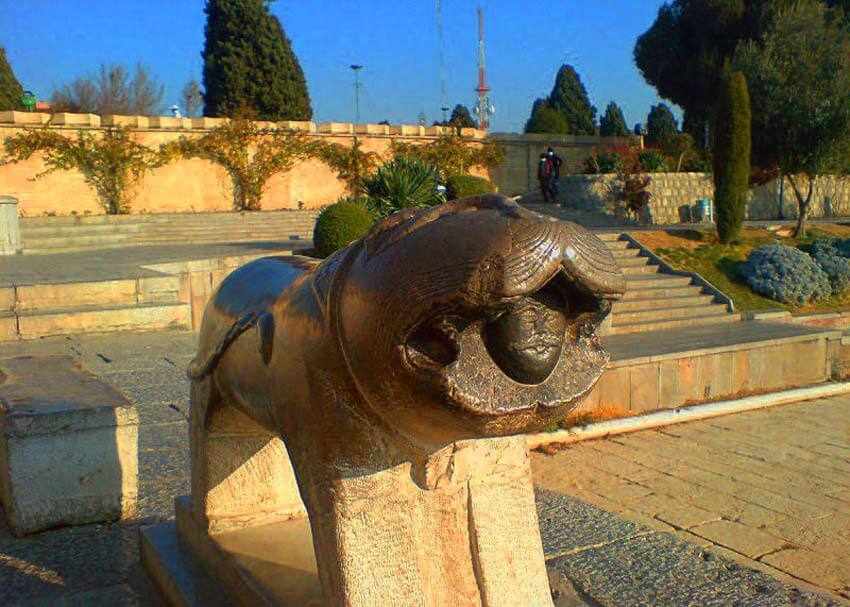
Iran boasts many historical cities, but if you’re eager to experience a city that feels like half the world, Isfahan is your top choice. Among the historical bridges of Isfahan, spanning over the Zayanderud River and located east of the Si-o-se-pol, is the Khaju Bridge.
Missing it during a trip to Isfahan is not an option. The architecture of this stunning bridge represents a lasting masterpiece of Persian art, truly breathtaking. Let’s dive into the history, features, and everything you need to know about the Khaju Bridge.
Contents
History of Khaju Bridge

The Khaju Bridge was constructed in 1060 by the order of Shah Abbas II of the Safavid dynasty. Initially named ‘Hasan Beyk’, related to the Timurid era, the bridge was rebuilt under Shah Abbas II, resulting in the magnificent and historical Khaju Bridge we see today.
The historical Khaju Bridge measures 133 meters in length and 12 meters in width, supported by 23 pillars. At its center lies an elegant building called “Beygler Beygi”, featuring stunning arches, built by Shah Abbas as a leisure and resting place for the Safavid family.
BOOK ONLINE
Isfahan Hotels
This architectural marvel has been known by various names, including Timuri, Shahi, Baba Rokn al-Din, Hasan Beyk, Hasanabad, Shiraz, Gabrha, and Khaje, each with its own unique significance. The name ‘Timuri’ dates back to the era of Timur, when a bridge was first built at this site.
The name ‘Shahi’ reflects its construction under Shah Abbas II. ‘Baba Rokn al-Din’ was chosen due to its location on the route to the mausoleum of Baba Rokn al-Din. ‘Hasan Beyk’ acknowledges its founding during the time of Hasan Beyk Turkman, and Hasanabad is the old name of this neighborhood, leading some to call the bridge ‘Hasanabad’.

The name “Shiraz” was chosen for the Khaju Bridge due to its proximity to the Isfahan-Shiraz road, frequented by travelers from Shiraz. Additionally, the name “Gabrha” reflects its use by Zoroastrians traveling to their neighborhood. “Khaje” was selected to honor the dignitaries of the Safavid era. Interestingly, the name of this historical bridge is also linked to its location in the Khaju neighborhood.
Read More: Isfahan Travel Guide
The architecture and design of the Khaju Bridge are truly extraordinary. Its decorations and tilework showcase Persian art to the world. The reflection of the Khaju Bridge in the Zayanderud River during the day and its lighting at night are absolutely mesmerizing. This historical bridge was constructed to connect Hasanabad Gate and the Khaju neighborhood with the Shiraz road and Takht-e Foulad. The Khaju Bridge was nationally registered in 1931.
Features of Khaju Bridge

The architecture and style of the historical Khaju Bridge are widely acclaimed, featuring expertly crafted paintings and tilework. Walking on this bridge, a historical symbol of Isfahan, is a delightful experience, offering a unique sensation. The Khaju Bridge of Isfahan is considered the city’s most important bridge and was once known as the finest and most beautiful bridge in the world. Intriguingly, this four-tiered bridge is constructed from stone, brick, and Sarooj.
The bridge’s design functions like a dam, with sluices on its portals allowing control of water flow and reservoir levels. This beautiful historical bridge has 24 openings, 21 water channels, and 26 springs, attracting numerous travelers and tourists. There are 51 large and small stalls on both sides of the bridge’s interior, enhancing its features. Next, we will delve into the fascinating and unparalleled features of the Khaju Bridge, which distinguish it from other bridges over the Zayanderud River.
Symmetry of Khaju Bridge

The design of the beautiful Khaju Bridge is a testament to the intelligence and skill of Iranian craftsmen. The symmetry of this historical bridge is truly unmatched and stunning. The art of symmetry in the Khaju Bridge is a clear demonstration of Persian expertise. To fully appreciate its beauty, a visit to this historical bridge in Isfahanis a must.
Stone Lions
On either side of the Khaju Bridge stand two stone lions, seeming guardians of this historical structure. These stone lions, symbolically protecting the bridge for about four centuries, have gained special popularity. Standing directly in front of each lion, you’ll notice their magnetic properties and the sparkle in their eyes, especially at night.

The engravings on these lions depict ancient Iranian sports, with a character on the back of each lion representing the first letter of the creator’s name.
Eagle with Spread Wings
Viewing the bridge from above, one can imagine the image of an eagle with spread wings. The feathers of the eagle are depicted by the merlons of different tiers, with the royal seat representing the eagle’s head.

Hidden Candles in the Bridge’s Arches
Another fascinating feature of the Khaju Bridge is the candle-like image created at a 39-degree angle in the lower tier and at the end of the bridge’s edge.
Positioning in the Water
The foundations of this historical bridge are fully immersed in the Zayanderud River, yet it remains sturdy and durable.
Mysterious Tombstones
After renovations in 2009, several valuable tombstones were discovered at the site. A limited number that remained intact were delivered to the Stone Museum at Takht-e Foulad.

Best Time to Visit Khaju Bridge in Isfahan
Isfahan is beautiful all year round, but the best times to visit this historical city are spring and autumn. Isfahan’s summers are very hot, and winters are extremely cold, which can detract from the enjoyment of your trip. Walking on the beautiful Khaju Bridge is particularly pleasant in spring and summer, especially when the Zayanderud River is full. The bridge is located in Khaju Square in Esfahan.
Final Thoughts
The Khaju Bridge is renowned for its unique architecture and beauty, making it one of Isfahan’s famous bridges over the Zayanderud River. The delicate paintings and tilework of this historical bridge are expertly crafted, and its symmetry adds to its allure. If you visit Isfahan, make sure to include a visit to this historical bridge in your plans and share your experiences with us.
Read More




